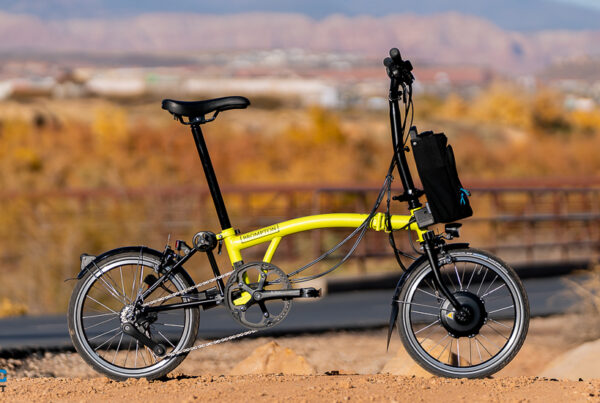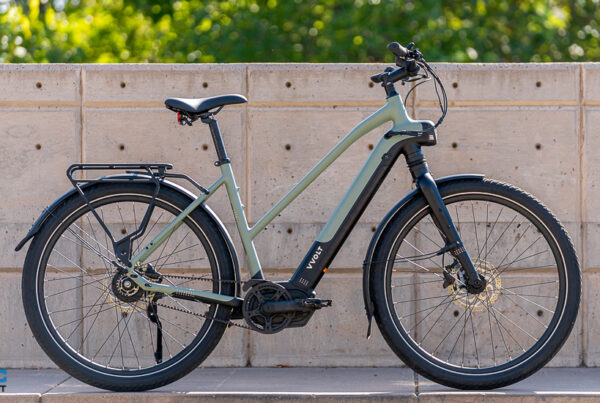If you are old like me, you remember how Betamax was a competing format against VHS, when it came to renting video-taped movies (this was during the ancient era before web-streaming, when the ships were wood and the men were steel). Sooo…who will win, and become the champion of future EV formats? Let’s take a look at how things are shaping up…
_______________________________________________
Long Range, or Fast Charging?
The USA is home to the rugged individualist, or at least…people who WANT to be a rugged individualist, or…they want other people to “think” they are rugged individualists. Either way, the rest of the world has been dragged kicking and screaming into a more hive-like existence that rewards the collective society.
Young idealistic tree-huggers may voice an interest in green tech, but one of the ways that “forward thinking” countries have “encouraged” their populace to do what they feel is “the right thing” is by taxing bad fuels so the alternatives don’t seem so bad. As of March 2021…Portugal, Norway, and the Netherlands have the price of gasoline at roughly $5.92-$8.58 per gallon (1.60-1.90 Euro’s per liter).
You may have thought that the reason the Netherlands have invested heavily in a fantastic and comprehensive light-rail and bus system is simply because they are smart and thoughtful (plus, they have the most extensive bicycle path system in the world).
Maybe they do simply care more about the Earth than the rest of the countries around the world, but…I think that they vote for tax dollars to build social transportation infrastructure because their government has been able to hold fast on maintaining the tax that makes gasoline $8/gallon (don’t worry, the current administration in the USA is doing their best to bring expensive fuel here too…).

You may be wondering why I wrote the previous few paragraphs first, before getting to the meat of this article, but…figuring out their motives can often clarify the differences concerning what the big countries are going to do next.
_______________________________________________
100V, 400V and 800V
I wrote an article a while back about recent exotic cars that were either hybrid or pure EV (click here). After collecting the data to write the article, one thing jumped out at me. Some of these cars were using about 800V. Enough of them did this that it couldn’t be a coincidence. I believe there are two reasons. First, higher volts means that any amp-limited system can get the same performance with fewer heat-producing amps. This not only affects the output performance, but the max-amps the battery can flow also has an affect on the charging time. Higher volts are able to charge faster, when public charging stations are limited on the amount of amps they can provide.
It’s obvious that most EV’s will have a significant charger installed at the owners home. Also, most electricity for the grid is consumed during the day, and the electrical generating grid is designed to handle the maximum loads experienced during the summer peaks. This means that in the cool winters, and also at night…there is an excess of electrical capacity just idling away. The best place and time to charge up an EV, is at home when you are sleeping at night. That way, there’s no need to build more of the expensive generating plants…at least for now.
This is where the European Union / EU and the USA go in different directions. The Tesla cars and Nissan Leaf have a design that emphasizes a large battery with lots of range (over 300 miles per charge is common). Of course Tesla has invested heavily in building an extensive charger network across the US, but very few people drive more than 300 miles in a day, and sales indicate that US customers are OK with 300-ish miles between charges. If they want to go farther than that, they will have to stop at a charging station halfway, and eat at a nearby restaurant, while their car is getting a “fast charge” to rapidly fill half its max range (a full charge slows down near the end). 300 miles at 65-MPH is a 4.6-hour drive…
In the EU, the big picture seems to indicate they are leaning towards having a smaller car battery with a higher voltage, and being able to charge rapidly. This lowers the cost of the battery, and also makes the car lighter to help its performance. That being said, there are still many 400V-capable public EV charging stations in the EU, to service 400V cars.
I mentioned that there were two reasons, and here’s the second one. The EU is investing heavily in electric buses (click here). and if you want to accelerate a 40,000-lb / 18,000-kg vehicle using modest amps, you definitely NEED to boost the voltage as high as is practical. Apparently, an input of up to 800V is what many EV-bus manufacturers have settled on. The Chinese bus manufacturer BYD has configurable batteries using the “fire safe” LiFePO4 chemistry in voltages from 380V up to 700V, to allow charging from both 400V and 800V nodes, depending on the local markets where they are purchased.

Exotic cars in the EU can take advantage of 800V fast-charging stations across the EU that were installed for buses and work-trucks, in bays that have EV car chargers.
This brings us back to those stubbornly independent Americans. The best-selling EV’s in the US by a large margin have been the Tesla cars, and the Nissan Leaf. Also, early sales deposits on the small and affordable Chevy Bolt indicate it will likely be a popular model. I mention these three in particular because they all use a voltage near 400V.
None of these voltage choices were based on safety, because anything over 100V can be lethal under the right circumstances, and the higher the voltage the easier it is to kill you. So, if only 100V will kill you, why not make the voltage as high as possible? More volts equals less amps, right? Tesla and Nissan have some very smart engineers working for them, so…why not make the voltage 500V, 600V or 700V? There are many factors and conflicting needs that have to be addressed when making a big decision like that, so let’s take a look.
Its true that in the EU system model, using 800V means you can get great performance at lower amps from a smaller battery, and you can also charge up faster. However, you can either choose to only drive short distances (European cities are fairly dense, instead of spread out), or you can charge frequently on a long trip. So…why not park your million-dollar 800V Koenigsegg once in a while, to use the restroom and get a relaxing espresso as you pass through Paris?
However, American cities (and many of the places we like to travel to) are somewhat spread out. And regardless of the reasons, American EV customers prefer paying a little more to get a longer range. Once you insist on having a large battery, the voltage can be lower to still get “X” amount of watts of power, because a large battery can easily put out big amps. Tesla knew from the beginning that the bottom half of an empty battery’s charge can accept a high-amp rapid-charge to replace half of its range in a fairly quick amount of time [The final top half of charge must be provided at lower amps because of heat].

Tesla’s fast “supercharger” station cables and their vehicle’s on-board batteries both have active cooling. Of course cooling the battery while driving allows you to pull massive amps without getting the battery too hot, but having a cooling system on the battery is also beneficial for faster charging too.
Why 400V? There are common transformers in the US that can convert the 20,000V grid power to 440V, and it is more efficient to drop voltage down slightly from 440 to something lower when converting AC to DC for charging, compared to running a boost circuit from 220V to a higher voltage. A small consideration, perhaps, but…sometimes a small rudder can change the course of a fairly large ship.
220V was too low, and 800V is un-necessary, especially in light of the American EV bus stations NOT being available to the public, so…400V it is.
I also added 100V in the title of this section, and that’s for Zero motorcycles. They use 28 lithium cells in series (28S), and I think they missed an opportunity by not configuring their battery as two 14S batteries in series. Common inverters can convert 48V/52V batteries into 120V AC to power for your home during an unexpected power outage (See: Texas February 2021).
If the nominal voltage of a single lithium cell is 3.6V, and it is fully-charged at 4.1V per cell, then…28S is 100V at a 50% charge, and 115V when fully charged. This allows for a fairly efficient charge from a 120V AC outlet that is found in most American garages.
A Zero engineer told me that using fewer cells also simplified the Battery Management System / BMS, which they considered very important.
Every Zero motorcycle comes with a small on-board charger that is potted for impact resistance and water-proofing. However, it is fairly slow due to it’s modest size. A larger “Tier 2” charger can be installed in your garage if desired, to speed that up. This means you can always start the day with a full battery when you wake up, and then top it off a bit at work, or where-ever you find a common 120V AC outlet.

The now-defunct Alta motorcycle used around 350V, and the performance was great, but…it was pricey, and their efforts early on were focused on trying to get a military contract. Their main product was an off-road version, and the higher volts allowed them to use a smaller high-RPM motor, since they chose to go with a low-amp system design in order to maximize battery range (no power outlets in the desert).
Our article on Jeff Dahn’s battery research (click here), showed that a while back, Tesla already knew about what they were going to be doing with batteries in the near future (today), and that includes a dramatic increase in the amount of amps that their cells could provide using the “tabless” internal configuration.
Also, there might not be any significant improvements in the capacity per volume in the near future, so…the big picture route suggested leaning towards lower volts and higher amps. For better or worse…Tesla, Nissan, Chevy, and Zero have taken this path, and so far it seems to be paying off for them in the US.

Speaking of lower volts and higher amps, Honda and Panasonic recently rolled out a hot-swappable battery pack system for scooters in Indonesia. The country of Indonesia is actually the third largest market in the world for 2-wheeled vehicles (population, 270-million), with a focus on light motorcycles and 50-MPH scooters.
Years ago, 48V was considered barely adequate for an electric street-driven scooter, with 72V being the popular upgrade for better performance. With higher amps now being available in these smaller battery packs, Honda chose 48V as their system voltage, and also the “fire safe” LiFePO4 chemistry (partially because it does not need the problematic Cobalt or Nickel).
In this system, you purchase the scooter (shown above), but you don’t buy the battery. Instead, charging stations are located almost everywhere, so you simply swipe your credit card, and swap the old battery for a freshly charged battery.

I’ve mentioned 48V being used to run a power inverter in the past (to provide 120V AC in a power outage), and this system has had these inverters available for purchase from the start. And for those who believe that 48V is way too low for a serious application, two of them can provide 96V in series.
_______________________________________________
The Plug Wars
The plug types that have stayed in the race are SAE J1772 (a simple engineering designation), CHAdeMO (which stand for “CHArge de MOve” but don’t ask why), and CCS is the “Combined Charge System”, with all three seen at the top of this article.
SAE stands for “Society of Automotive Engineers”, and the J1772 number is the name of a plug type. It was first introduced in 2001 as a 6.6-kW capable interface. The introduction of the Nissan Leaf at a reasonably affordable price in 2010 prompted the SAE to vote on an upgrade to the plug standard to 19-kW and 80A in 2010, by adding two larger DC pins at the bottom. The companies that agreed to include the upgraded J1772 socket for their near-future EV’s were Chrysler, GM, Ford, Honda, Toyota, Nissan, and Tesla.

CHAdeMO is a 2005 plug standard from the Japanese electric power conglomerate TEPCO, and companies that agreed to adopt it were Honda, Toyota, Nissan, Mitsubishi, Subaru, Hitachi, and Panasonic. However, with the huge EV markets in the USA and the EU, this plug has been declining in use, as other formats allow customers to take advantage of growing public charger availabilities in those regions.

CCS started in Germany in 2011 as an agreement by Audi, BMW, Daimler, Porsche, Volkswagen, Ford, and General Motors, to reduce public charging conflicts with plug types. The original 7-pin top half of the CCS plug was called the Mennekes AC plug, and adding two large DC pins under it is what became the CCS Type-2 standard, which can charge at up to 63A. This remains popular.

_______________________________________________
Tesla, the 500-lb gorilla
When I was a kid, there was a joke that went something like this…”Where does a 500-lb gorilla sit?” And the answer is “Anywhere he wants”.

Tesla has gone with their own design of plug and socket, however they do have adapters for their customers around the world who want to access CHAdeMO, J1772, and CCS public chargers. Tesla’s that are built in China will have a dual-socket interface, with one of them being the completely different Chinese “GB” socket.

_____________________________________________
Nissan Leaf
The Nissan Leaf is the best-selling electric car in the world, but sales in the US make it only the second highest selling here, after the very popular Tesla Model-3. The Leaf comes stock with a CHAdeMO socket, and also a J1772 Type-1 socket.

_______________________________________________
There have been other system voltages and plug types that have fallen by the wayside, and these types of things have a way of consolidating over time, as they are now. For instance, as of March 2021…KTM, Yamaha, Honda and Piaggio have agreed to partner on developing and using the exact same swappable battery, voltage, and plug type for their off-road dirt bikes. Last summer, Suzuki and Kawasaki had expressed interest in joining-in, but are not contractually committed at this time.
I have heard an interesting story about the momentum of interface standards. When the Space Shuttle was being designed in 1969, the decision was made to have the two solid-rocket boosters made at Thiokol in Utah, and they were to be transported to the Florida launch-site by train. This meant that their diameter was limited by the width of the railroad tunnels along the way. The tunnels were very expensively dug out of the rocky mountains to barely fit the locomotives.
The width of the modern locomotives was dictated by the width of the two rails on the train tracks, made to fit the older steam locomotives. The two rails for the older locomotives were spaced to match the horse-drawn wagons of the day, since hundreds of trails across the US had been forced to use dynamite to just barely remove enough large boulders from tight passes. By using an existing trail width, it saved on extra work and cost.
Wagons had been built to a width that set the wheels into common road ruts that had been worn into the trails for decades, helping them to avoid sliding off to the side in slippery conditions. But…who decided on the best width of the early wagons in the western expansion? Wagons were built to the width of two side-by-side horse-butts. A narrower wagon with the horses in-line would be unstable, prone to flipping onto their side. And wider wagons would not fit narrow trails.
The diameter of the space-shuttle solid rocket boosters is the width of two horse-butts.
_______________________________________________
Written by Ron/spinningmagnets, March 2021
Source link








